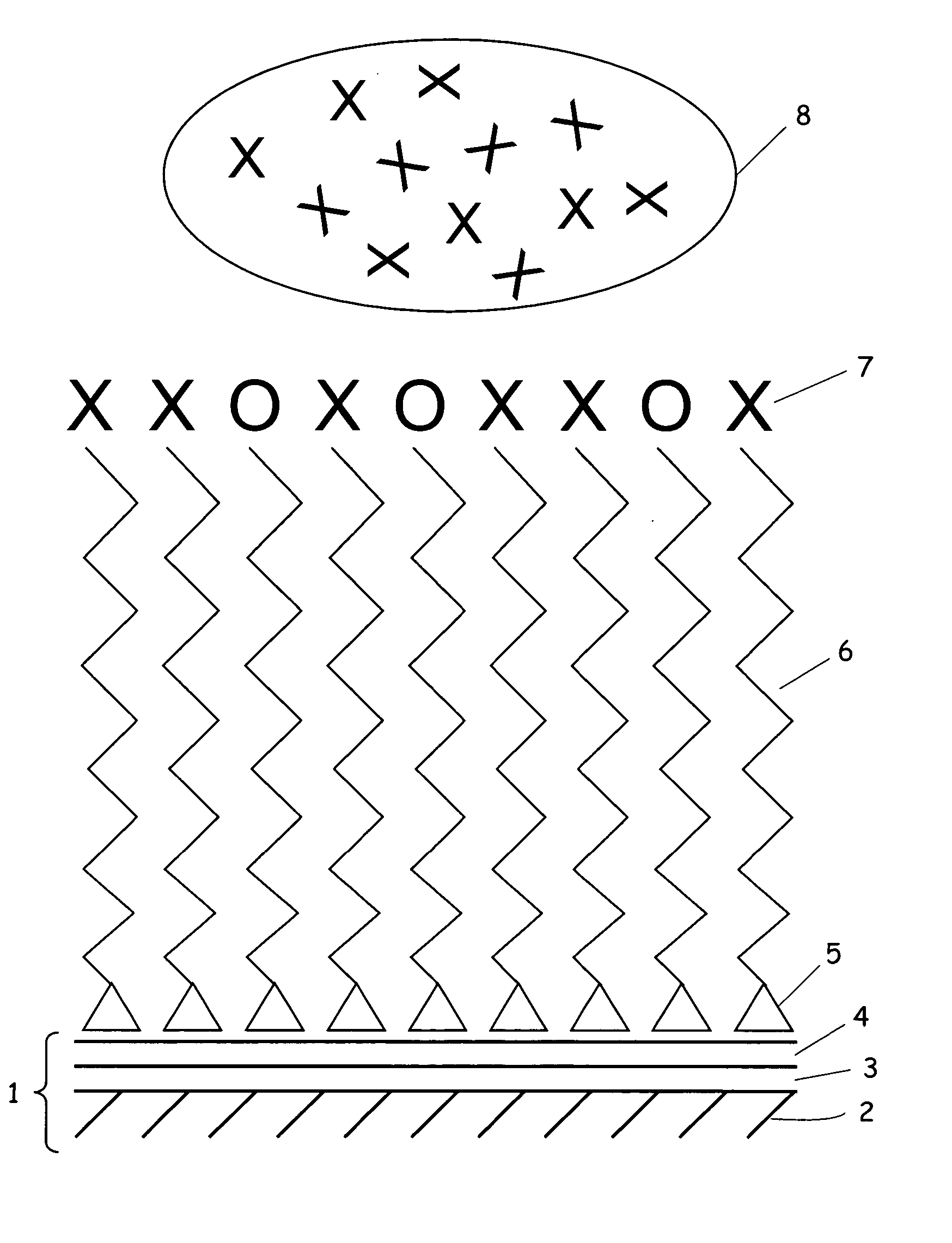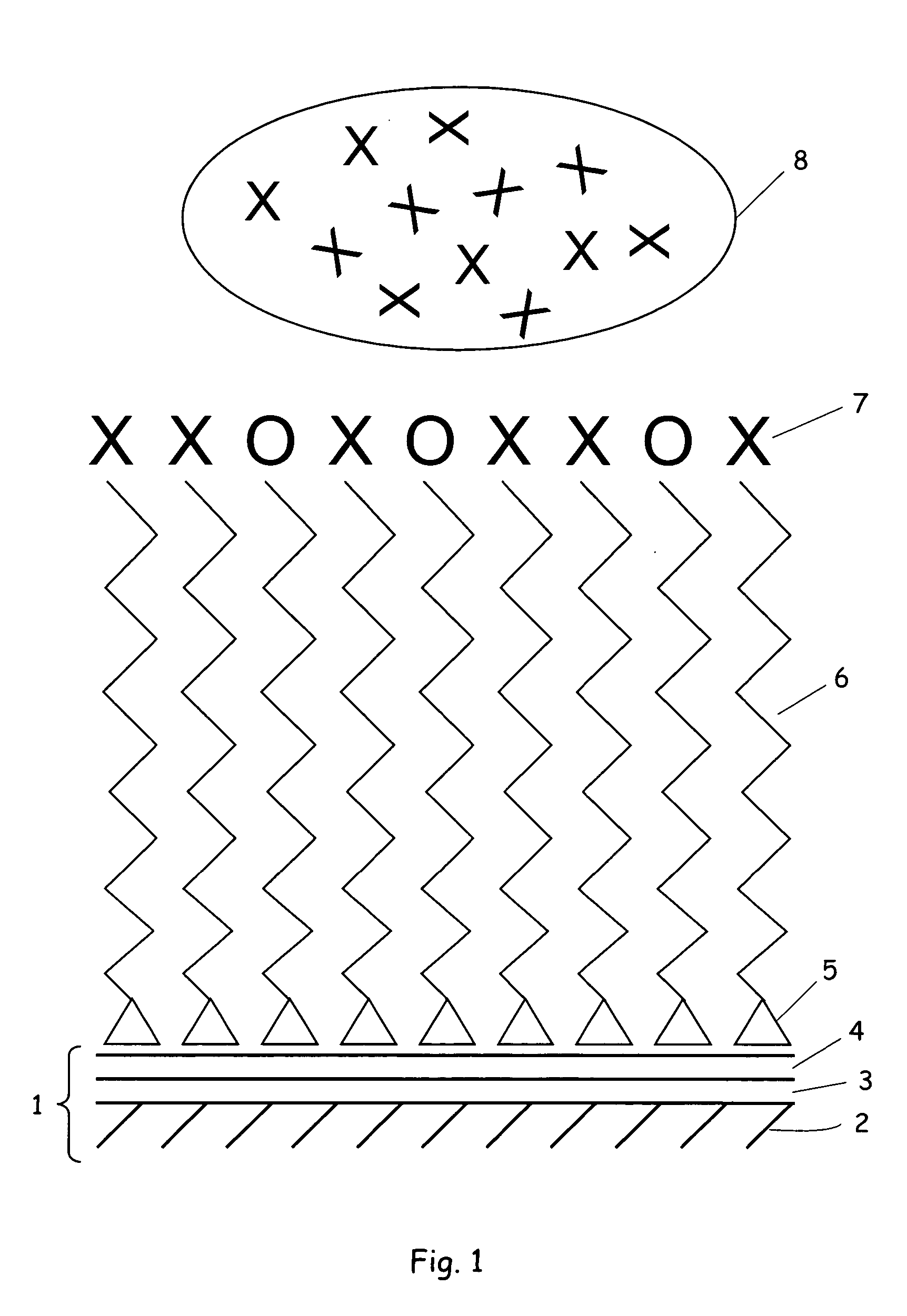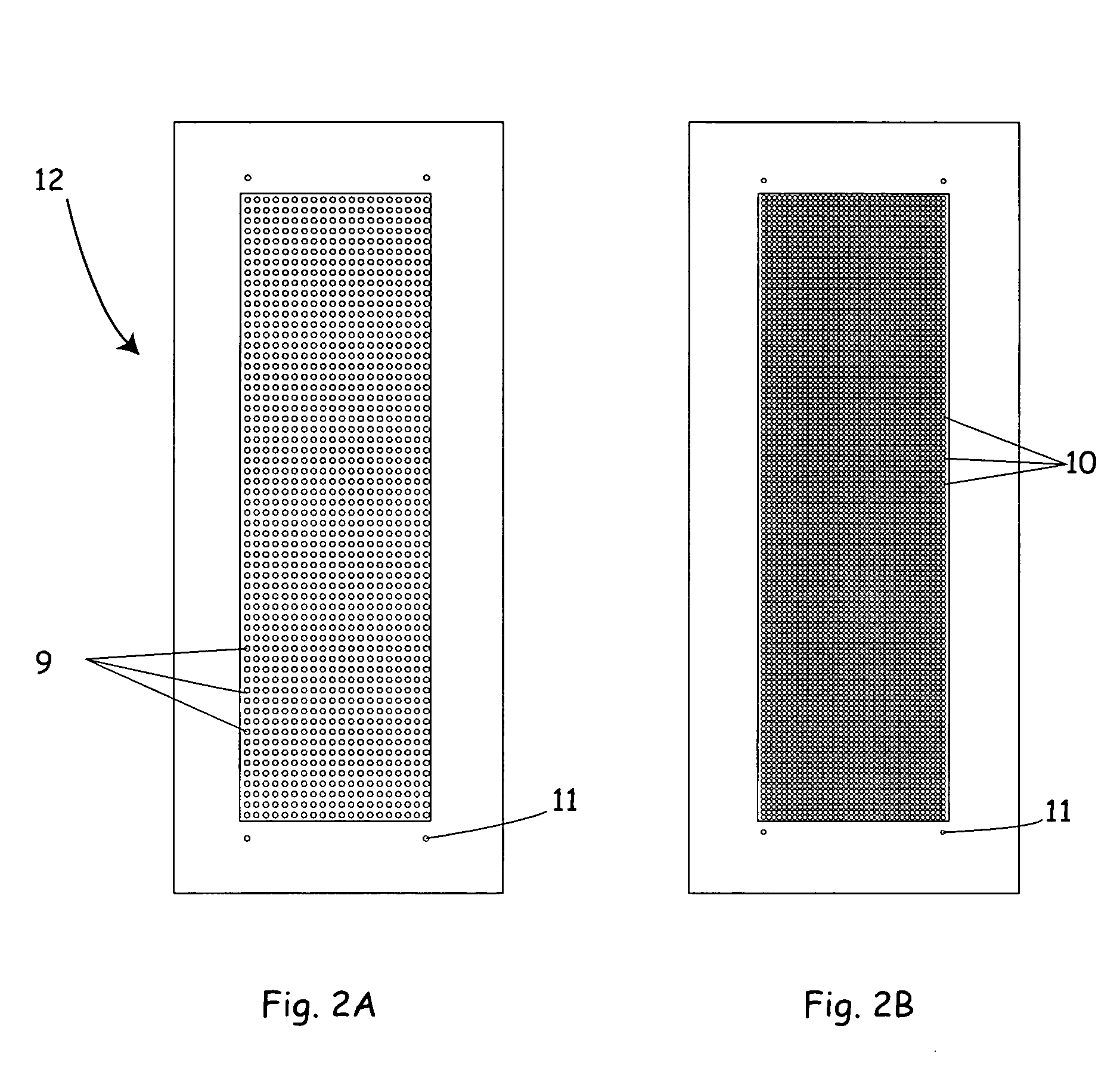High density reagent array preparation methods
a high density, array technology, applied in chemical methods analysis, instruments, chemical indicators, etc., can solve the problems of limited usefulness of some arrays, difficult alignment of sippers with reagent spots, and reagent recovery, and achieve high and consistent reagent recovery, high density arrays, and high precision dissolution and recovery.
- Summary
- Abstract
- Description
- Claims
- Application Information
AI Technical Summary
Benefits of technology
Problems solved by technology
Method used
Image
Examples
example
[0134] The following non-limiting Example illustrates the use of surface coatings, consisting of self-assembled monolayers (SAM's) of alkanethiol molecules, to control the surface properties of a microarray substrate. X-ray photoelectron spectroscopy (XPS) and equilibrium contact angle measurements were performed in order to confirm the chemical content and wetability of these surface coatings. In order to test their performance in microarraying applications, sample microarrays were printed on these mixed alkanethiol films and then characterized with a non-contact visual metrology system and a fluorescence scanner. This Example demonstrates that utilizing mixed alkanethiol SAMs as a surface coating provides spatially homogeneous surface characteristics that are reproducible across multiple microarray substrates as well as within a substrate. In addition, this Example demonstrates that these films are stable and robust as they can maintain their surface characteristics over time. Ove...
PUM
 Login to View More
Login to View More Abstract
Description
Claims
Application Information
 Login to View More
Login to View More - R&D
- Intellectual Property
- Life Sciences
- Materials
- Tech Scout
- Unparalleled Data Quality
- Higher Quality Content
- 60% Fewer Hallucinations
Browse by: Latest US Patents, China's latest patents, Technical Efficacy Thesaurus, Application Domain, Technology Topic, Popular Technical Reports.
© 2025 PatSnap. All rights reserved.Legal|Privacy policy|Modern Slavery Act Transparency Statement|Sitemap|About US| Contact US: help@patsnap.com



